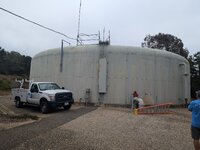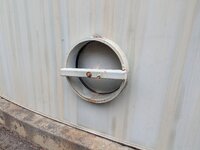BR0
Structural
- Nov 10, 2010
- 51
Hi All,
I was wondering if anyone knows of a suitable textbook or other industry source with examples of water tank designs for some of the ancillary items. Currently, I'm trying to find examples of manhole and vent sizing design in new or existing water tanks.
I have pretty good examples of the overall tank design, IE, shell and roof design.
I also have API 650 and section 5.7.5, which have minimums, but it notes to provide "calculations ...for the maximum required thickness". I was hoping to get worked out examples if they exist.
Thanks
I was wondering if anyone knows of a suitable textbook or other industry source with examples of water tank designs for some of the ancillary items. Currently, I'm trying to find examples of manhole and vent sizing design in new or existing water tanks.
I have pretty good examples of the overall tank design, IE, shell and roof design.
I also have API 650 and section 5.7.5, which have minimums, but it notes to provide "calculations ...for the maximum required thickness". I was hoping to get worked out examples if they exist.
Thanks


